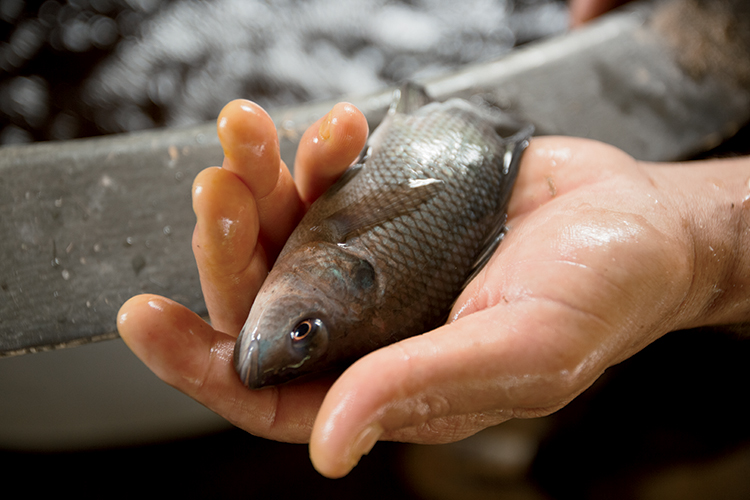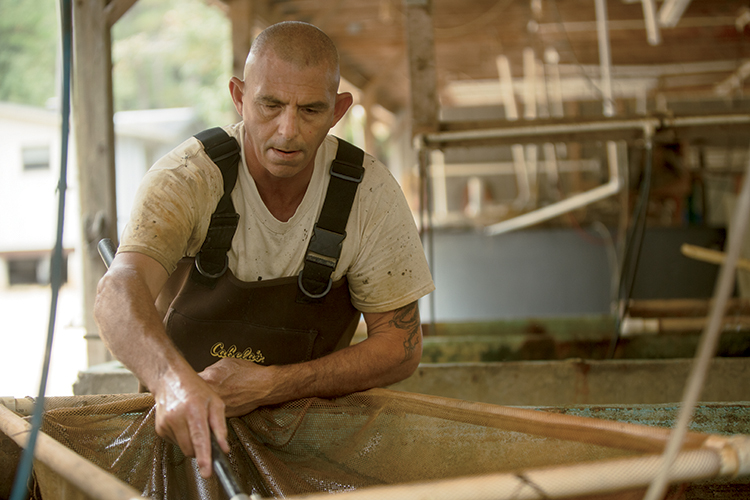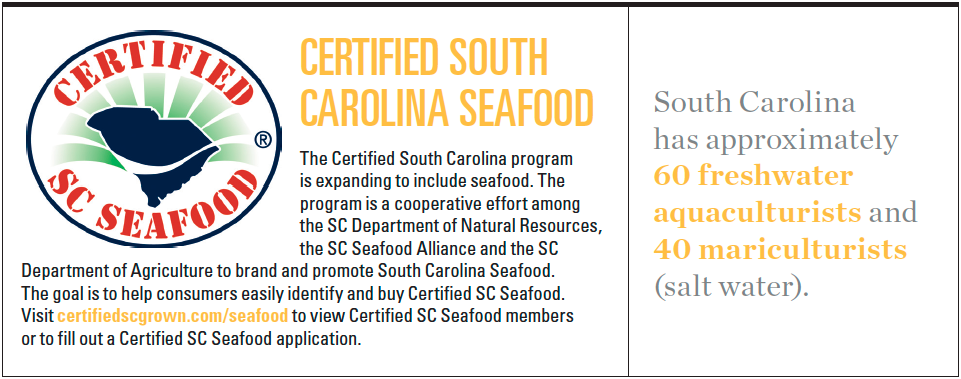Home > South Carolina > South Carolina Crops & Livestock > South Carolina has Aquaculture on the Hook
South Carolina has Aquaculture on the Hook

Americans consume more than 16 pounds of seafood per person every year – and 88 percent of that fish is imported. To keep fresh fish on the American dinner table, farming is becoming more vital.
For generations, shrimpers and trawlers were the primary sources of fish and seafood, but farming is helping meet that demand, now more than ever. Thanks to a pristine water supply and evolving developments in the fish-farming industry, South Carolina is establishing itself as a leader in farmed fish production, also known as aquaculture.
Farmed fish, including hybrid striped bass, tilapia, flounder and cobia, are becoming more and more common fare in restaurants. Why?

“Aquaculture farmers are really good stewards of natural resources,” says Chad Truesdale, executive director of the South Carolina Aquaculture Association.
While aquaculture first hit American markets with catfish in the 1950s, innovative techniques have continued to evolve, which means that farmers can produce more fish, utilizing fewer acres and less water. Tilapia is one that thrives in densely populated ponds or tanks with lower oxygen levels and in warmer waters.
“We are seeing an increase in those farmers involved in the super-intensive method, which can be done on less expensive inland property with minimum water exchange,” Truesdale says.

The super-intensive method can take abandoned greenhouse operations, for instance, and repurpose those strictly for fish operations or a combination known as aquaponics, where the water from the fish tanks is used to fertilize plants – “fertigation” – thus giving the farmer a double bang for his buck.
The larger aquaculture efforts in South Carolina revolve around fish production for pond and lake stocking, such as that provided by Southland Fisheries Corporation in Hopkins. Founded and owned by Clay Chappell and two partners more than 30 years ago, Southland provides premium quality fish eggs, fry and fingerlings to clients worldwide.
“We use very pristine water for our fish farms, and we try to maintain a very healthy population of fish that will grow rapidly and healthily,” Chappell says, noting that blue gill bream, sterile grass carp, hybrid striped bass and about a dozen others.

“The aquaculture industry has a lot of potential for growth in South Carolina,” Chappell says. “It is agriculture that smaller producers can start, even backyard farmers. Even with aquaponics, the growers can grow fish and use the water to produce plants, conserving the water through recycling. The conventional type of fish farming can also utilize land that may not be suited to traditional farming.”
Of course, the bread and butter of the state’s fishing industry is from the Atlantic. The South Carolina Department of Agriculture worked with the Department of Natural Resources to develop a Certified Seafood program that helps consumers know they are eating fish that was caught in South Carolina waters.
“This is a brand new program so that we can track seafood back to the body of water from which it was caught,” Truesdale says. “For the producer and the retailer, you have the added value of the consumer knowing this is a local product, and they are willing to pay a little more for it.”





I’m looking to make an aquapinics garden. ~50 fish. I’d love to learn more and share that knowledge.